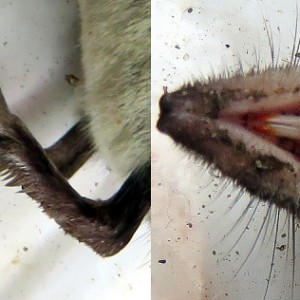Tiny corpse
Sometimes it seems the smaller the organism the more interesting it is. I didn't go far from the house today but nevertheless found this little creature dead on the path. It's not your ordinary common or garden shrew, it's a (rarer) water shrew, distinguishable by its near-black coat with silvery underside, and its longer, rudder-like, tail. And as a denizen of watercourses it has large hairy back feet for swimming. It was a little way away from the network of soggy ditch and streams that must have been its home territory but maybe it was caught by a predator (fox, cat or owl perhaps) that spat it out the notoriously bitter morsel. Or it might have simply dropped dead in its tracks: shrews have a very high metabolic rate and need to feed constantly to maintain their energy levels, indeed they have to consume at least half their weight each day, mostly insects and their larvae. They also have a mildly venomous bite capable of paralysing frogs and small fish. Instructions for captive breeding of water shrews (to restock habitat not to keep as pets!) recommend a menu of
'approximately two tablespoons of Pedigree Chum dog food per day, on alternate days four large crickets or half a tablespoon of mealworms.' Hardly surprising the constant snacking plays havoc with a water shrew's teeth despite the red tips of their incisors said to provide thicker enamel.
Furry feet and tinted teeth can be seen enlarged in the extra image.


Comments
Sign in or get an account to comment.


